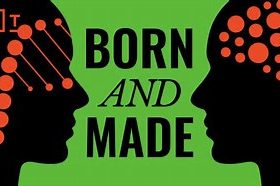by Michael D. Watkins
Harald (not his real name) is a high-potential leader with 15 years of experience at a leading European chemical company. He started as an assistant product manager in the plastics unit and was quickly transferred to Hong Kong to help set up the unit’s new Asian business center. As sales there soared, he soon won a promotion to sales manager. Three years later he returned to Europe as the marketing and sales director for Europe, the Middle East, and Africa, overseeing a group of 80 professionals. Continuing his string of successes, he was promoted to vice president of marketing and sales for the polyethylene division, responsible for several lines of products, related services, and a staff of nearly 200.
All of Harald’s hard work culminated in his appointment as the head of the company’s plastic resins unit, a business with more than 3,000 employees worldwide. Quite intentionally, the company had assigned him to run a small but thriving business with a strong team. The idea was to give him the opportunity to move beyond managing sales and marketing, get his arms around an entire business, learn what it meant to head up a unit with the help of his more-experienced team, and take his leadership skills to the next level in a situation free from complicating problems or crises. The setup seemed perfect, but a few months into the new position, Harald was struggling mightily.
Like Harald, many rising stars trip when they shift from leading a function to leading an enterprise and for the first time taking responsibility for a P&L and oversight of executives across corporate functions. It truly is different at the top. To find out how, I took an in-depth look at this critical turning point, conducting an extensive series of interviews with more than 40 executives, including managers who had developed high-potential talent, senior HR professionals, and individuals who had recently made the move to enterprise leadership for the first time.
What I found is that to make the transition successfully, executives must navigate a tricky set of changes in their leadership focus and skills, which I call the seven seismic shifts. They must learn to move from specialist to generalist, analyst to integrator, tactician to strategist, bricklayer to architect, problem solver to agenda setter, warrior to diplomat, and supporting cast member to lead role. Like so many of his peers, Harald had trouble negotiating most of these shifts. To see what makes them so difficult, let’s follow him through each of them, as he confronts unnerving surprises, makes unwarranted assumptions, encounters entirely new demands on his time and imagination, makes decisions in ignorance, and learns from his mistakes.
Specialist to Generalist
Harald’s immediate challenge was shifting from leading a single function to overseeing the full set of business functions. In his first couple of months, this shift left him feeling disoriented and less confident in his ability to make good judgments. And so he fell into a classic trap—overmanaging the function he knew well and undermanaging the others. Fortunately for Harald, this became crystal clear when his vice president of HR gave him some blunt feedback about his relationship with his sales and marketing VP: “You are driving Claire crazy. You need to give her some space.”
Harald’s tendency to stay in his functional comfort zone is an understandable reaction to the stresses of moving up to a much broader role. It would be wonderful if newly appointed enterprise leaders were world-class experts in all business functions, but of course they never are. In some instances they have gained experience by rotating through various functions or working on cross-functional projects, which certainly helps. (See the sidebar “How to Develop Strong Enterprise Leaders.”) But the reality is that the move to enterprise leadership always requires executives who’ve been specialists to quickly turn into generalists who know enough about all the functions to run their businesses.
How to Develop Strong Enterprise Leaders
Early in their careers, give potential leaders… Experience on cross-functional projects and then responsibility for …
What is “enough”? Enterprise leaders must be able to (1) make decisions that are good for the business as a whole and (2) evaluate the talent on their teams. To do both they need to recognize that business functions are distinct managerial subcultures, each with its own mental models and language. Effective leaders understand the different ways that professionals in finance, marketing, operations, HR, and R&D approach business problems, and the various tools (discounted cash flow, customer segmentation, process flow, succession planning, stage gates, and the like) that each discipline applies. Leaders must be able to speak the language of all the functions and translate for them when necessary. And critically, leaders must know the right questions to ask and the right metrics for evaluating and recruiting people to manage areas in which they themselves are not experts.
The good news for Harald was that, in addition to assigning him to a high-performing unit, his company had strong systems in place for evaluating and developing talent in key functions. These included well-crafted systems for performance reviews and 360-degree feedback, and for collecting input from corporate functions. His heads of finance and HR, for instance, while reporting directly to him, also had dotted-line reporting relationships with their respective corporate departments, which assisted Harald with their evaluation and development. So he had plenty of resources to help him understand what “excellence” meant for each function.
By investing directly in creating standardized evaluation schemes for each function, companies can ensure that new enterprise leaders get the lay of the land faster. But even if their firms don’t have such systems, aspiring enterprise leaders can prepare themselves by building relationships with colleagues in other functions, seeking to learn from them (perhaps in exchange for insight into their own functions) so that they can develop their own templates.
Analyst to Integrator
The primary responsibility of functional leaders is to recruit, develop, and manage people who focus in analytical depth on specific business activities. An enterprise leader’s job is to manage and integrate the collective knowledge of those functional teams to solve important organizational problems.
Harald found himself struggling with this shift early on as he sought to address the many competing demands of the business. His sales and marketing VP, for example, wanted to aggressively go to market with a new product, while his head of operations worried that production couldn’t be ramped up quickly enough to meet the sales staff’s demand scenarios. Harald’s team expected him to balance the needs of the supply side of the business (operations) with those of its demand side (sales and marketing), to know when to focus on the quarterly business results (finance) and when to invest in the future (R&D), to decide how much attention to devote to execution and how much to innovation, and to make many other such calls.
Once again, executives need general knowledge of the various functions to resolve such competing issues, but that isn’t enough. The skills required have less to do with analysis and more to do with understanding how to make trade-offs and explain the rationale for those decisions. Here, too, previous experience with cross-functional or new-product development teams would stand newly minted enterprise leaders in good stead, as would a previous apprenticeship as a chief of staff to a senior executive. But ultimately, as Harald found, there is no substitute for actually making the calls and learning from their outcome.
There is no substitute for actually making the calls and learning from their outcome.
Tactician to Strategist
In his early months, Harald threw himself into the myriad details of the business. Being tactical was seductive—the activities were so concrete and the results so immediate. Consequently, he lost himself in the day-to-day flow of attending meetings, making decisions, and pushing projects forward.
The problem with this, of course, was that a core part of Harald’s new role was to be strategist-in-chief for the unit he now led. To do that, he had to let go of many of the details and free his mind and his time to focus on higher-level matters. More generally, he needed to adopt a strategic mind-set.
How do tactically strong leaders learn to develop such a mind-set? By cultivating three skills: level shifting, pattern recognition, and mental simulation. Level shifting is the ability to move fluidly among levels of analysis—to know when to focus on the details, when to focus on the big picture, and how the two relate. Pattern recognition is the ability to discern important causal relationships and other significant patterns in a complex business and its environment—that is, to separate the signal from the noise. Mental simulation is the ability to anticipate how outside parties (competitors, regulators, the media, key members of the public) will respond to what you do, to predict their actions and reactions in order to define the best course to take. In Harald’s first year, for instance, an Asian competitor introduced a lower-cost substitute for a key resin product his unit made. Harald needed not only to consider the immediate threat but also to think expansively about what the competitor’s future intentions might be. Was the Asian company going to use this low-end product to forge strong customer relationships and progressively offer a broader range of products? If so, what options should Harald’s unit pursue? How would the competitor respond to what Harald chose to do? Those were not questions he had been responsible for as head of marketing and sales. In the end, after analyzing various courses of action with his senior team, he chose to lower prices, forgoing some current profits in an effort to slow the loss of market share—a move he did not live to regret.
Are strategic thinkers born or made? The answer is both. There’s no doubt that strategic thinking, like any other skill, can be improved with training. But the ability to shift through different levels of analysis, recognize patterns, and construct mental models requires some natural propensity. One of the paradoxes of leadership development is that people earn promotions to senior functional levels predominantly by being good at blocking and tackling, but employees with strategic talent may struggle at lower levels because they focus less on the details. Darwinian forces can winnow strategic thinkers out of the developmental pipeline too soon if companies don’t adopt explicit policies to identify and to some degree protect them in their early careers.
Bricklayer to Architect
Too often, senior executives dabble in the profession of organizational design without a license—and end up committing malpractice. They come into their first enterprise-level role itching to make their mark and then target elements of the organization that seem relatively easy to change, like strategy or structure, without completely understanding the effect their moves will have on the organization as a whole.
About four months into his new role, for example, Harald concluded that he needed to restructure the business to focus more on customers and less on product lines. It was natural for him, as a former head of sales and marketing, to think this way. In his eyes it was obvious that the business was too rooted in product development and operations and that its structure was an outdated legacy of the way the unit had been founded and grown. So he was surprised when his restructuring proposal was met first with stunned silence from his team and then with vociferous opposition. It rapidly became clear that the existing structure in this successful division was linked in intricate and nonobvious ways to its key processes and talent bases. To sell the company’s chemicals, for instance, the salespeople needed to have deep product knowledge and the ability to consult with customers on applications. A shift to a customer-focused approach would have required them to sell a broader range of complex products and acquire huge amounts of new expertise. So while a move to a customer-focused structure had potential benefits, certain trade-offs needed to be evaluated. Implementation would, for instance, require significant adjustments to processes and substantial investments in employee retraining. These changes demanded a great deal of thought and analysis.
As leaders move up to the enterprise level, they become responsible for designing and altering the architecture of their organization—its strategy, structure, processes, and skill bases. To be effective organizational architects, they need to think in terms of systems. They must understand how the key elements of the organization fit together and not naively believe, as Harald once did, that they can alter one element without thinking through the implications for all the others. Harald learned this the hard way because nothing in his experience as a functional leader had afforded him the opportunity to think about an organization as a system. Nor did he have enough experience with large-scale organizational change to develop those insights from observation.
In this Harald was typical: Enterprise leaders need to know the principles of organizational change and change management, including the mechanics of organizational design, business process improvement, and transition management. Yet few rising executives get any formal training in these domains, leaving most of them ill equipped to be the architects of their organizations—or even to be educated consumers of the work of organizational development professionals. Here Harald was once again fortunate in having—and having the sense to rely on—an experienced staff that offered him cogent advice about the many interdependencies he had not originally considered. Not all new enterprise leaders are that lucky, of course. But if their companies have invested in sending them to executive education programs that teach organizational change, they’ll be better prepared for this shift.
Problem Solver to Agenda Setter
Many managers are promoted to senior levels on the strength of their ability to fix problems. When they become enterprise leaders, however, they must focus less on solving problems and more on defining which problems the organization should be tackling.
To do that, Harald had to perceive the full range of opportunities and threats facing his business, and focus the attention of his team on only the most important ones. He also had to identify the “white spaces”—issues that don’t fall neatly into any one function but are still important to the business, such as diversity.
The number of concerns Harald now had to consider was head-spinning. When he had run sales and marketing, he had gained some appreciation for how difficult it was for business heads to prioritize all the issues thrown at them in any given day, week, or month. Still, he was surprised by the scope and complexity of some of the problems at this level. He wasn’t sure how to allocate his time and immediately felt overloaded. He knew he needed to delegate more, but he wasn’t clear yet about which tasks and assignments he could safely leave to others.
You may be surprised by the intensity of the attention at center stage and the almost constant need to keep up your guard.
The skills he had honed as a functional leader—mastery of sales and marketing tools and techniques, organizational know-how, and even the ability to mobilize talent and promote teamwork—were not enough. To work out which problems his team should focus on—that is, to set the agenda—he had to learn to navigate a far more uncertain and ambiguous environment than he was used to. He also needed to learn to communicate priorities in ways his organization could respond to. Given his sales and marketing background, Harald struggled less with how to communicate his agenda. The challenge was figuring out what that agenda was. To some degree he just had to learn from experience, but here again he was aided by the members of his team, who pressed him for guidance on issues they knew he needed to consider. He also could rely on the company’s annual planning process, which provided a structure for defining key goals for his unit.
Warrior to Diplomat
In his previous roles, Harald had focused primarily on marshaling the troops to defeat the competition. Now he found himself devoting a surprising amount of time to influencing a host of external constituencies, including regulators, the media, investors, and NGOs. His support staff was bombarded with requests for his time: Could he participate in industry or government forums sponsored by the government affairs department? Would he be willing to sit for an interview with an editor from a leading business publication? Could he meet with a key group of institutional investors? Some of these groups he was familiar with; others not at all. But what was entirely new to him was his responsibility not just to interact with various stakeholders but also to proactively address their concerns in ways that meshed with the firm’s interests. Little of Harald’s previous experience prepared him for the challenges of being a corporate diplomat.
What do effective corporate diplomats do? They use the tools of diplomacy—negotiation, persuasion, conflict management, and alliance building—to shape the external business environment to support their strategic objectives. In the process they often find themselves collaborating with people with whom they compete aggressively in the market every day.
To do this well, enterprise leaders need to embrace a new mind-set—to look for ways that interests can or do align, understand how decisions are made in different kinds of organizations, and develop effective strategies for influencing others. They must also understand how to recruit and manage employees of a kind that they have probably never supervised before: professionals in key supporting functions such as government relations and corporate communications. And they must recognize that these employees’ initiatives have longer horizons than the ongoing business, with its focus on quarterly or even annual results, does. Initiatives like a campaign to shape the development of government regulation can take years to unfold. It took Harald a while to understand this, as his staffers educated him about how painstakingly they managed issues over protracted periods of time and how they periodically bemoaned the results when someone took his eye off the ball.
Supporting Cast Member to Lead Role
Finally, becoming an enterprise leader means moving to center stage under the bright lights. The intensity of the attention and the almost constant need to keep up his guard caught Harald by surprise. He was somewhat shocked to discover how much stock people placed in what he said and did. Not long after he first took the job, for example, he met with his vice president of R&D and mused about a new way of packaging an existing product. Two weeks later a preliminary feasibility report for it appeared on his desk.
In part, this shift is about having a much greater impact as a role model. Managers at all levels are role models to some degree. But at the enterprise level, their influence is magnified, as everyone looks to them for vision, inspiration, and cues about the “right” behaviors and attitudes. For good or ill, the personal styles and quirks of senior leaders are infectious, whether they are observed directly by employees or indirectly transmitted from their reports to the level below and on down through the organization. This effect can’t really be avoided, but enterprise leaders can make it less inadvertent by cultivating more self-awareness and taking the time to develop empathy with subordinates’ viewpoints. After all, it wasn’t so long ago that they were the subordinates, drawing these kinds of inferences from their own bosses’ behavior.
Then there is the question of what it means, practically speaking, to lead large groups of people—how to define a compelling vision and share it in an inspiring way. Harald, already a strong communicator who was used to selling ideas along with products, still needed to adjust his thinking in this regard (though perhaps less so than some of his counterparts). In his previous job he had maintained a reasonable degree of personal, albeit sometimes sporadic, contact with most of his employees. Now that he was overseeing 3,000-plus people scattered around the globe, that was simply impossible.
The implications of this became clear as he worked with his team to craft the annual strategy. When the time came to communicate it to the organization, he realized that he couldn’t simply go out and sell it himself; he had to work more through his direct reports and find other channels, such as video, for spreading the word. And after touring most of the unit’s facilities, Harald likewise worried that he’d never really be able to figure out what was happening on the front lines. So rather than meet just with leaders when he made site visits, he instituted brown-bag lunches with small groups of frontline employees and tuned in to online discussion groups in which employees could comment on the company. For the most part, the seven shifts involve switching from left-brain, analytical thinking to right-brain conceptual mind-sets. But that doesn’t mean enterprise leaders never spend time on tactics or on functional concerns. It’s just that they spend far, far less time on those responsibilities than they used to in their previous roles. In fact, it’s often helpful for enterprise leaders to engage someone else—a chief of staff, a chief operating officer, or a project manager—to focus on execution, as a way to free up time for their new role.
As for Harald, his story ended well. He was fortunate to be working for a company that believed in leadership development and to have an experienced team that was able—and willing—to give him effective counsel. So despite the many bumps in the road, the business continued to thrive, and Harald eventually found his stride as an enterprise leader. Three years later, armed with all this experience, he was asked to take over a much larger, struggling unit of the company and initiated a successful turnaround. Reflecting back, he says, “The skills that got you where you are may not be the requisite skills to get you to where you need to go. This doesn’t discount the accomplishments of your past, but they will not be everything you need for the next leg of the journey.”




























Leave a Reply